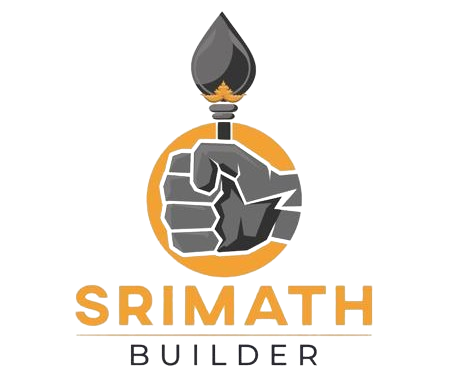Call experts
+91 80150 50994
Home Loan Schemes in India: Benefits, Importance, and Types
Table of Contents
Owning a home is a dream for many, but the high costs of real estate and construction often make it seem unattainable. To bridge this gap, home loans have become a popular option. In this blog, we’ll explore the various home loan schemes in India, including their types, benefits, and what to consider before applying.
What is a Home Loan?
A home loan is a type of secured loan used primarily for purchasing or constructing a house. The house itself serves as collateral for the loan. These loans typically come with low-interest rates and long repayment periods, paid back in monthly instalments (EMIs). Once the loan is fully repaid, the ownership of the property is transferred to the borrower.
Home loans can be used for buying ready-made homes, constructing new ones, or even for renovations.
Types of Home Loans in India
India offers various home loan schemes to suit different needs. Below are some of the most common types:
Basic Home Loan
This standard loan helps individuals purchase a property. Lenders typically offer up to 75% of the property’s value, depending on the borrower’s eligibility.Bridged Loans
These loans are designed for borrowers who wish to sell their current home and buy a new one. The loan helps cover short-term needs, like the down payment on the new house, until the old one is sold.Home Construction Loans
For those who already own land, this loan helps in constructing a new home or completing a partially built one. The loan is usually sanctioned in installments based on the construction stages.Home Renovation Loans
Ideal for those looking to upgrade their homes, these loans cover up to 90% of the renovation costs. The loan amount is based on the loan-to-value ratio.Home Loan Balance Transfer
If you find a lender offering a lower interest rate than your current one, you can transfer your home loan. However, be sure to factor in any hidden costs like processing fees.Home Extension Loans
This loan is for those looking to add extra rooms or spaces to their existing home. Some lenders categorize it under renovation loans, while others treat it separately.CLSS Scheme Under PMAY
The Pradhan Mantri Awas Yojana (PMAY) offers a Credit Linked Subsidy Scheme (CLSS) for economically weaker sections and middle-class families, providing interest subsidies to make home loans more affordable.Reach Home Loans
Specifically for people working in the unorganized sector, this loan covers various purposes such as buying property, building a home, or renovating an existing house.
Eligibility Criteria for Home Loans
To apply for a home loan, lenders evaluate several factors:
- Age and Loan Repayment Tenure: The younger you are, the better your chances of getting a home loan. The repayment tenure is also a key factor.
- Financial Profile: Your income consistency and amount determine your eligibility. Whether you are salaried or self-employed, a stable income is essential.
- Credit Score: A high credit score speeds up the loan approval process and may help secure a better interest rate.
- Other Financial Obligations: Lenders also assess any existing liabilities (e.g., personal loans, credit card debts) to determine your ability to repay the home loan.
Documentation Required for a Home Loan
Here’s a list of documents typically required to apply for a home loan:
- Identity Proof: Passport, voter ID, Aadhaar, PAN card, or driver’s license.
- Address Proof: Aadhaar, utility bills, passport, or voter ID.
- Proof of Income: Salary slips, income tax returns, or bank statements.
- Property Documents: Sale deed, property papers, or NOC from the builder.
- Employment Proof: Employment certificate or appointment letter.
Benefits and Features of Home Loans
- Easy Availability: Home loans are easily accessible through banks and NBFCs, with simple eligibility checks.
- Multi-Purpose Use: Home loans can be used for purchasing a home, constructing a property, or even renovating an existing one.
- Low Interest Rates: As secured loans, home loans generally have lower interest rates compared to other loan types.
- Quick Processing: The approval process for home loans is faster due to minimal documentation and less stringent eligibility criteria.
- Long Tenure: With repayment tenures of up to 30 years, borrowers can benefit from affordable EMIs that fit within their monthly budgets.
Factors to Consider When Choosing a Home Loan
Before applying for a home loan, here are some key factors to keep in mind:
CIBIL Score
A higher CIBIL score (750 or above) increases your chances of getting a loan at a lower interest rate. Your CIBIL score reflects your ability to repay the loan.Total Loan Amount
Typically, banks offer 75-90% of the property’s value. Make sure to check the loan amount your lender is willing to finance.Floating vs. Fixed Interest Rates
Choose between fixed and floating interest rates. Fixed rates stay the same throughout the loan tenure, while floating rates fluctuate with market conditions.Equated Monthly Installments (EMI)
The EMI is a fixed monthly payment that includes both principal and interest. Some loans offer pre-EMI payments if the property is under construction.Repayment Tenure
The repayment period can range from 5 to 30 years. Longer tenures reduce EMIs but increase the total interest paid. Shorter tenures result in higher EMIs but lower interest costs.Cost-to-Benefit Ratio
Before transferring your home loan, compare the cost of transferring (processing fees, stamp duties, etc.) with the savings on interest rates.
Conclusion
Home loans in India are an essential tool for making homeownership accessible to millions. With a variety of loan schemes available, competitive interest rates, and flexible repayment tenures, they offer an ideal solution for individuals and families looking to buy or build a home. Make sure to understand the eligibility criteria, documents required, and the various loan features before making an informed decision.

